
Login
X
- Home
- About Us
- Courses
- Graduation
- Diploma Certificate
- Professional Diploma
- Special sessions / Aptitude boost up
- News & Events
- Student zone
- Placement
- Gallery
- FAQ
- Contact Us
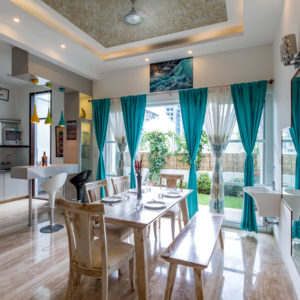

If beautiful rooms are on your mind, then you are most probably looking for the right person to do the job! And chances are, this person will either be a Designer or a decorator. But, in your head, do they both sound the same? Well, people do tend to mix up both, even though they are different. Read on to know the difference between Interior Design and Interior Decoration before you make your call.
In simple words, Interior design is the art and science of making a space useful and beautiful. Thus, a designer has to consider many things before fixing a design for a given space:
.. and more. So approach a designer ideally when you are about to begin with planning your home. That way, you save a lot of time and money! Also, the designer can use your feed-backs to create just the right space for you. Basically with a designer, you can be laid back when it comes to managing everything from start to finish. Moreover, you can also observe designers specializing in any one branch. Some examples are
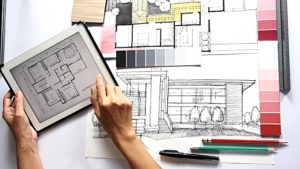
Now that you have an idea about designers, lets move on to interior decorators. So as the term suggests, this profession is more about decorating spaces according to client’s tastes and the decorator’s artistic skills. Here given below are a few of the things that a decorator does.
So basically, a decorator is essentially going to decorate the space. And he/she makes sure your space has that chic touch to it. Also, the decorator does not care about the building codes or standards unlike a designer. And when it comes to specializing, a decorator may be:

Do you think you have an artistic sense? Also, do people appreciate your design style? Or are you frequently consulted in matters of furniture and interior arrangements? Then you can become a decorator for sure!
The most basic difference among these two is- qualification. So, a designer often has a professional degree or a diploma. Thus, there are certain guidelines in each area of design for them to follow. But a decorator can explore interior decoration as a hobby. And with time and experience, he/she can create a portfolio of his/her jobs.
In many places, designers need license to practice. That is not applied to decorating.
The approach to work also varies. A designer thinks well ahead in future while designing for the present. But a decorator focuses on what’s new and trending for a space.
A designer works with many people most of the times- architects, contractors, carpenters-to make the design come true-for the space owner. However, the space is as functional as beautiful it appears to be.
A decorator, on the other hand, is more into the looks and feel of a space. Also, he/she mostly works with retailers or sellers of interior products. Here, the aim is to create a unique aesthetic space that shows high design value. Also, he/she knows what’s new and trending and goes with what appeals to the eyes and senses. So, their space may have a piece quite high on design value but not much in comfort- if that is what the design demands for the space!
To round it up, both designers and decorators have their fair amount of works, at times overlapping; most of the times, independent of each other. It all depends on what you want to do- give a refreshing makeover to a space or put up an aesthetic space that serves you in the long term.
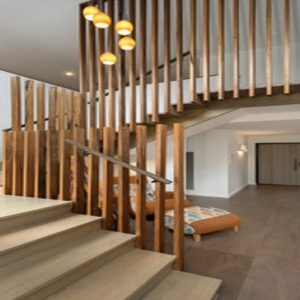
Who doesn’t love a comfortable and cozy home? But the real fun begins when the comfortable home looks all the more attractive. Of course, the design of a room depends on many factors,the most crucial being its size. This blog is about interior design ideas for that perfect finish to small rooms of your house.
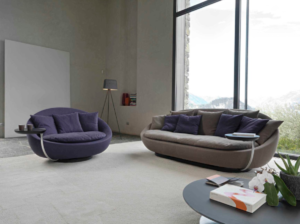
The answer to this question decides the final outlook of your room. For a clutter-free interior, minimalism is ideal. But if it is not your call, look for other options that limit the clutter in a small room. Also, you can experiment by mixing two different styles and yet keep things cool! For example, take the earth tones and rough textures from rustic style and add it to a modern setting as accent. So, the point to keep in mind here is that you don’t need too much stuffs on the floors. Why? Because you need to move around smoothly and look around unobstructed.
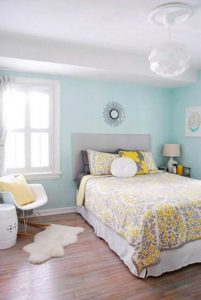
In simple words, light colors make an interior look larger and more spacious. Hey, that doesn’t mean you paint everything white! You can work with light tones of your favorite color. Also, light colors tend to save up on your lighting needs. So basically with colors like off-white and faint blush, its a win-win situation!
Not only will you hamper free air circulation with partitions, but you will also waste some space as well. So, use partitions ONLY if it is unavoidable. And if you feel a semi-private partition will be okay, opt for fabrics. Yes, fabrics offer interesting alternative for a solid opaque wall. Again, with light color, translucent material and light prints, you can add partition curtains that won’t make their presence felt.
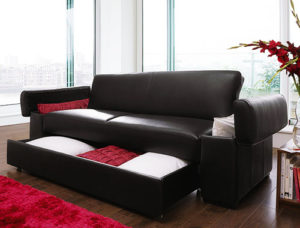
Instead of going for a platform bed, opt for a box bed with concealed storage drawers. Also, don’t scatter many single storage units. Substitute them with a vertical chest of drawers that takes up less floor area and can also settle in a corner of room.
Do away with anything and everything that darkens the space. And that includes dark shades or colours, heavy textures on furnishings and surfaces or something as basic as low lighting. Also, plan for maximum use of daylight in such a way that you require almost no artificial light during daytime. Adequate light brings a certain energy and the space tends to look bigger and more spacious.

… can make your room look big, not small! Mirrors reflect light and so it only makes sense to create spacious illusions using them. Also, if you plan cleverly then mirrors are a great way of enhancing or manipulating various light sources in your room. However, this one is slightly tricky among other interior design ideas in the sense that excess of mirrors may cause unwanted glares,reflection or other such issues.
Basically that means, opt for multipurpose furniture. There are a variety of options available in the market that work like magic for small spaces. Well, take for example, the sofa-cum-bed. For a small home with only a single bedroom, this piece of furniture is a big relief when guests drop in unannounced for the night!
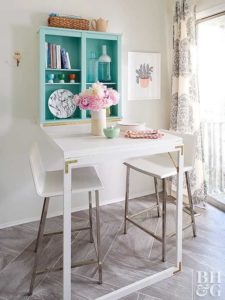
Modular cabinets or furniture are great if you have to keep changing your address every once in a while. And so, it is one of the best interior design ideas that you can add to a small room. How? Consider a foldable platform bed that conceals into a wall and reveals storage shelves on the other side during daytime. Also, fancy a tabletop concealed over the wall, to be revealed only when you have to chop your veggies or have that hot cup of soup!
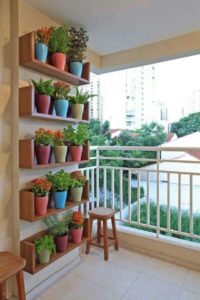
Yes, you heard that right. Use your kitchen wall to fix accessories that can take care of your cutlery,pots and pans. Open storage shelves that extend vertically and similar accessories are great interior design ideas for small spaces. Also, extend this idea to your sweet little balcony and voila! Your vertical garden with pretty flower pots will add the touch of mother nature to your home.
Try to avoid big elaborate patterns or decorative motifs on your wallpapers. Also, you can go for plains/stripes instead of detailed florals when you select carpets, curtains or rugs. Again, keep the tones light. Plain, straight, clean lines in your interior will definitely magnify the visual perception of available space. So even with your sofas and bed linen, go for plain versions or if you just can’t skip florals, select minimally patterned textiles.
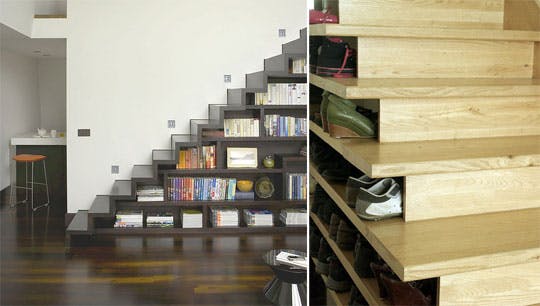
Use your stairs as built-in drawers for extra storage space. if the headroom height allows, you can actually set up a small library under a stair flight itself! Add some shelves to hold the books and make a cozy chair relax in one corner. Come to think of it, you can hide away in your books if you have such an adorable space in your home!
These interior design ideas are, what you may call, just the tip of the iceberg! With careful planning of your needs, budget and space, you can make the most of the little space you have in your home sweet home!

Does this question come in your way every time you think about Interior Design? Well, it is an important question for sure! After all, we also want money to keep our interests on track! And if you can’t wait to make a career out of your creativity, this question is definitely a decisive one. So, let us see where Interior Designer salaries stand in the current design Industry.

Like with any other industry, salaries in Interior design depend a lot on what exactly you do as a designer, where you work, nature of your work and so on. Let’s understand how it works.
Your job title, once you enter the design field, has a big role in your salary. You may begin as a draftsman in a firm and gradually may take the plunge to 3D visualizing. Or, you may join as a site supervisor for an ongoing project in a design firm. So, each designation has its own salary bracket.
Your earnings,if you happen to be a freelancer, fall in another category altogether. Well, lets talk about that later.
Almost in sync with your designation, the location of your firm decides your income. So if you are a draftsman working in a city like Calicut or Pune, expect your starting salary to be Rs.10,000/- to Rs.12,000/- per month. However, if you happen to work in metropolitan cities like Delhi or Mumbai, you can start with a monthly package of Rs.15,000/- to Rs.20,000/-. This is equally true for 3D Visualizing and other job titles as well.
Of course, it goes without saying that the more experienced you are, the better you earn. But another aspect to consider is the nature of your experience. So expect a good package if both the Employer design firm requirement and your portfolio works are about residential designing, as an example. However, you may have to compromise a bit if you specialize in commercial designs and apply to a residential design firm.
Your professional qualification is another point that influences your salary package. Of course, a Design degree fetches you more than a Design diploma. And one of the main reasons for this is the big difference in portfolios. Also,a degree program is almost always followed by internship or training, which gives you an edge in professional conduct.

A good firm is like good luck-tricky to find but worth it! So if you happen to land a job that gives performance based appraisals, then your quality of work can make it or break it! Also, there are firms that follow periodic appraisal policies, like an yearly increment. And of course, then there are firms that do not believe in appraisals at all… let us not keep our hopes high in those cases!
The ultimate dream of any and every interior designer is to own a design firm eventually and become an entrepreneur. But both have their own pros and cons, like two sides of a coin.
As a freelancer, you enjoy the absolute freedom-to choose a work, to decide how to go about it, how to design and so on. Obviously,you tend to work on your own terms and you enjoy all the profits. And as you gradually establish your own design firm, you see to it that the works you undertake are as per your signature design statement. You many stand to make as much as six-figure package monthly depending on the number of fruitful projects you do.

But, when you run a business, you have to foresee a lot of things. And most importantly you have to keep the works flowing in. You are responsible for anything and everything that happens in the firm. Also, as is with any business, there is no fixed income guarantee.
Now, when you are a salaried professional, you enjoy certain privileges such as leaves,salaries and increments. Also, there is a sense of Job security. However, the growth is comparatively slower as compared to being an independent interior designer.
Interior designer salaries (monthly) for design professionals begin from 10,000 INR to 25,000 INR and these only keep increasing with experience and time. So now that you know you stand to earn, don’t waste any more time- go and kick start your design career!
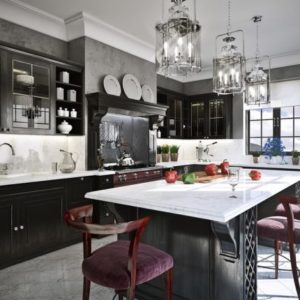
Colors add visual value to an interior space. So much that, many interior styles have their own defining shades of different hues. If a room has ever caught your fancy, its color definitely had a role in it. So this blog is all about the latest colors trending this year in design circles.
A beautiful design depends to a great extend, on the colors that it uses. This is true for Interior Design as well. Colors set the tone and the mood for an interior. And 2018 has seen subtle yet powerful splashes of colors in designer spaces. Here we list down a few of the more popular ones.

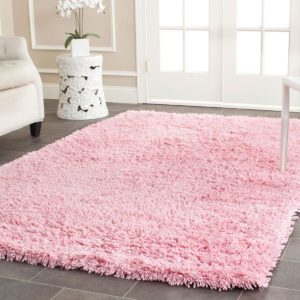
A quietly but steadily emerging trend in 2018 has been that of the soft peachy pink. Many people opt for this color for room backgrounds, such as walls. It adds elegance while keeping things simple. Mix and match with grays and you have it as your accent color. Add some deep red shades(sparingly) and this shade turns into a muted background.
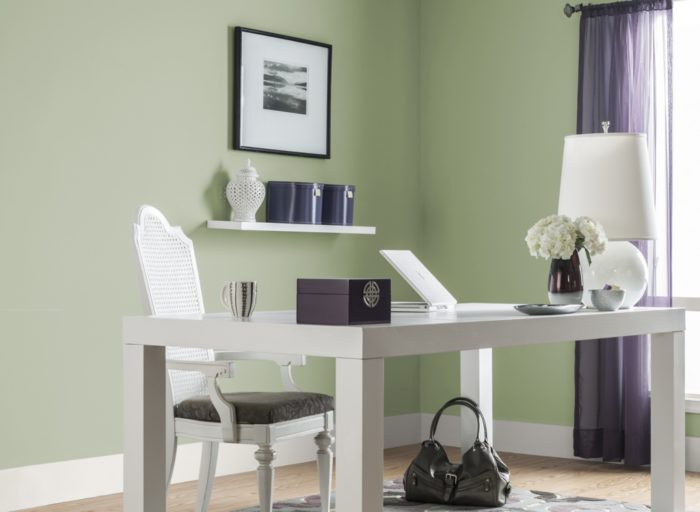
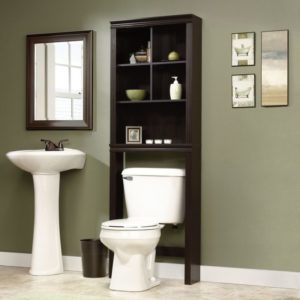
Also known as Sage, this shade is an amazing statement to an interior. It stays between the neutral grays and slightly brushes over Green. The silent tones make for a perfect palette! And another great thing about this color is its ability to contrast with white! Enchanting schemes in Sage have made it one of the latest colors tending in 2018.
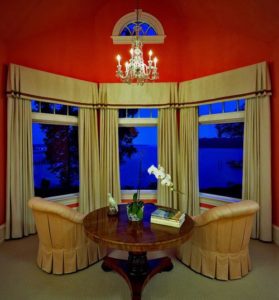
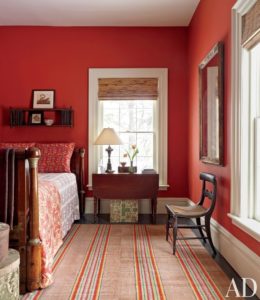
An unlikely color that has made its mark in 2018 design circles is passionate, deep red. Well,on its own, it remains one of the strongest shades. And that is why you have to be very clever when you decide on using it in your rooms. The right amount of crimson adds that accent to your space. However, if you are worried about the shade going overboard, restrict it to accessories. Also, to achieve the perfect balance, you can safely opt for neutrals along.
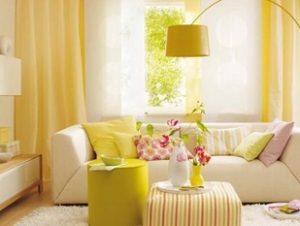
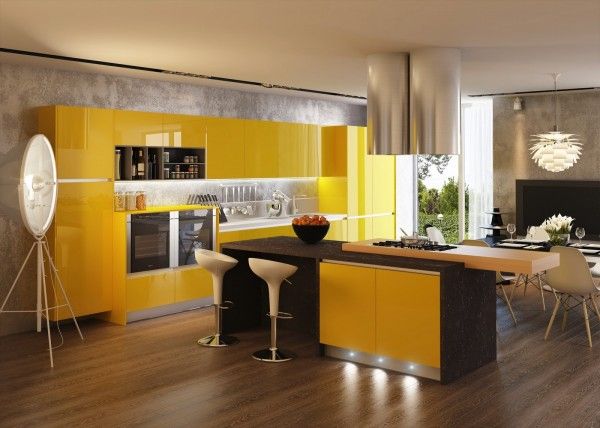
Yellow brings a certain energy into the space it adorns. Tired people may find the color refreshing, especially in rooms such as Kitchen or common room. And that makes it one of the latest colors trending this year. Still you have to be cautious while working with the color since too much yellow may have wearing-out effects. So try to apply it in patches. Also, you can mute down the tone in a way that it has a pleasant effect.
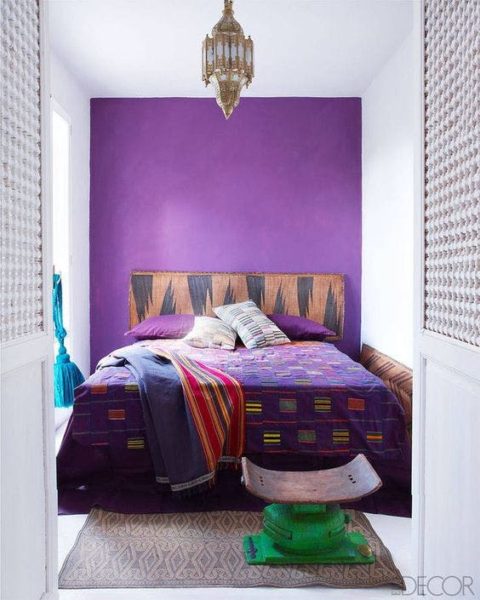
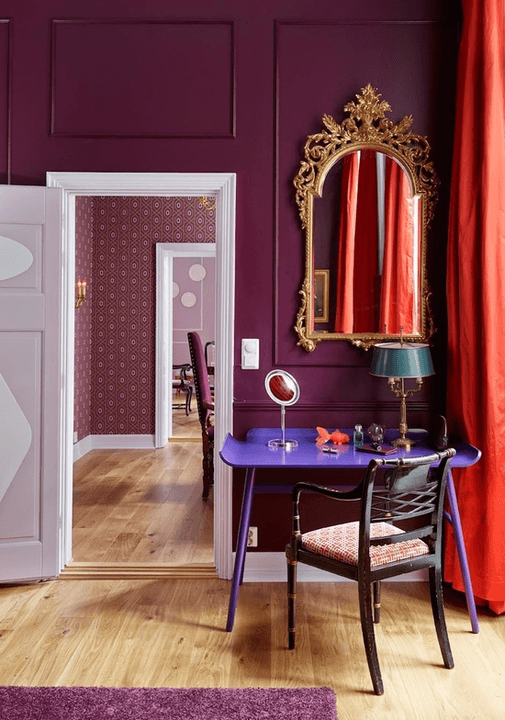
When Pantone announced Ultraviolet as its Color of the Year for 2018, everybody knew something dynamic was about to happen! The latest colors trending currently have Ultraviolet as a chart-topper. So, many Indian and international designers are experimenting with the color in terms of hue, tints and shades. Thus, ultraviolet interiors can be vibrant with gloss and textures or laid-back and relaxed with plain and matte finishes.
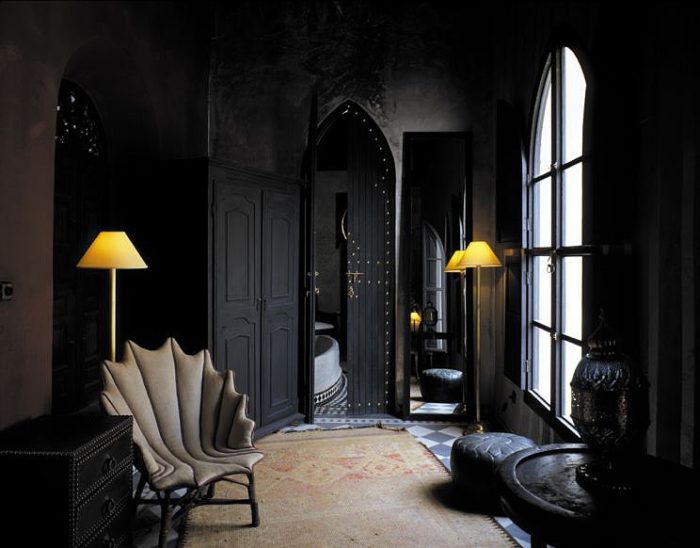
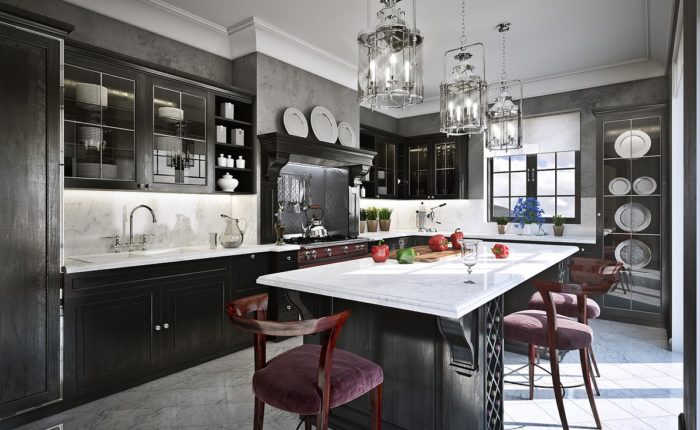
Black is the threshold of anything latest in colors. And that is why every year you hear about a certain color being the new Black. This year, black refuses to simply be absolute as charcoal- it aims at going down a tone or two. So that basically means there are interiors in shades of gray and black. The attractive point is that the monochromes not only complement each other, but very beautifully bring out the value of any other color around them.
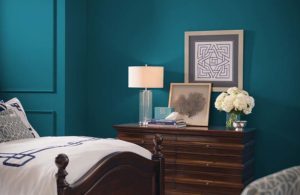
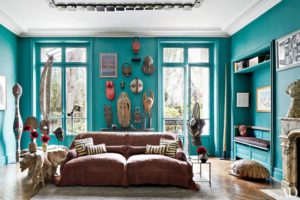
No, we are not talking about the teals or turquoises. Well, this shade is what you can call the best of both worlds.This color has proved to be a safe bet for those who fail to decide on one shade. It goes well with neutral schemes to give a calm and relaxing interior. And with zesty colors such as yellow, the hidden green in it beautifully complements the scheme. And the hidden blue softens the sharp contrast to eyes. No wonder it is a bestseller among the latest colors trending in interiors!
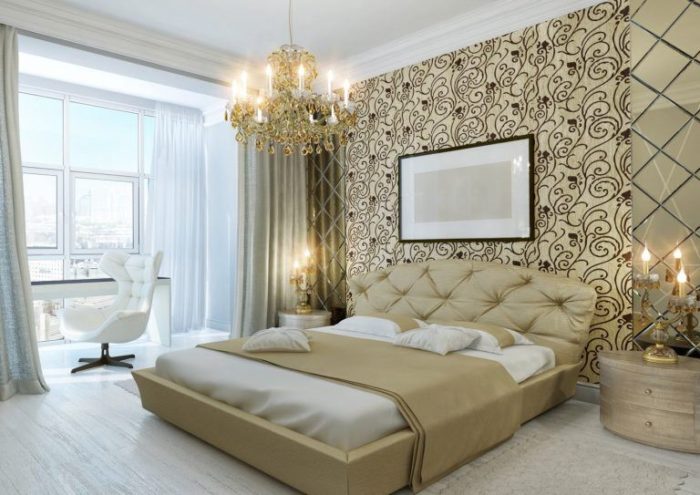
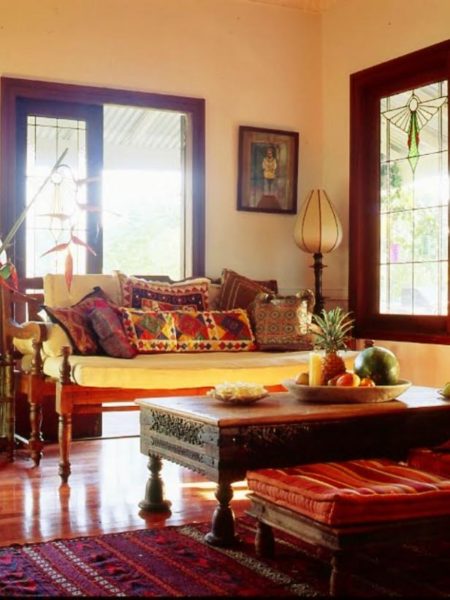
Apart from the colors mentioned above there are many others that have grabbed the designers’ attention globally. Metallic colors seem to be the new neutrals. And yet, the demand for rich earthy tones refuses to settle down. A cousin of Yellow, the Marigold (mustard) color, has its own fan following. Of course, not to forget, the calm minds that still relish turquoise and emerald interiors!
The application of colors extend to landscapes as well. With the right mix, you update your current dwelling into your perfect home!
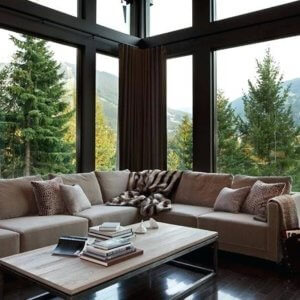
When Pantone announced Ultraviolet as its color for this year, the industry had a fair idea what to expect in the interior design trends in 2018. The style statements in design are extended to all related fields such as fashion design and product design. The year 2018 has witnessed interesting symphonies of unsuspecting elements to add the spark in interiors and the results have been pretty impressive. Here is what you will come across in social media this year!
Hectic schedules have deprived people of soothing moments in their daily lives. This has led to a desire of subtle decoration of master bedrooms. Minimalism rules when it comes to decorating bedrooms this year. Neutral shades and calmer tones help in soothing down the occupant and minimalism ensures a cluster free environment for a peaceful sleep.
The stainless steel and wooden tone cabinets have started giving way to their slightly colorful counterparts. Of course, a white kitchen is classic but people now want their kitchens to be livelier and more in sync with their individual choices.
The use of wood in flooring and furniture can never be replaced. What this year brings to it is change of preferences. Instead of plain strip locks, herringbone patterns have emerged to be a common wooden feature. The warmth and elegance of wooden shades have been extensively used in imparting a rich interior look.
A bathroom these days is a get-away sanctuary- spa-like features add element of luxury and comfort where in a person can relax and seek serene surroundings. Organic touch ups in the form of wooden elements and natural stones along with a sprinkle of greenery here and there, takes bathrooms a few notches up.
Limited textures are trending. What could be more appealing than a touch of nature? Popular fashion and fabric patterns denote a constant presence of floral imprints, mimicking the 70’s. The difference here is the limited use in the interiors, such as in wallpapers and bed linens. The use is restrained and yet experimental.
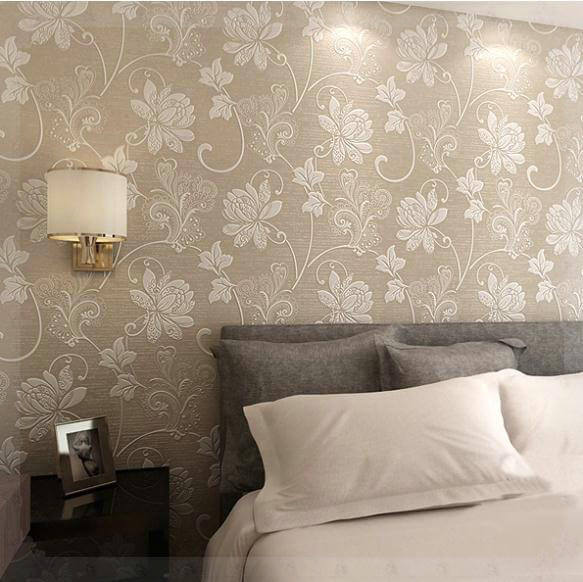
While 2017 did see some statement colors making rounds in premium interiors, 2018 is more about popping colors and it gets only bolder- it happily accommodates gold and metallic hues. This does increase the work of an interior designer since it calls for clever combinations that stay easy on the eyes and continue to delight the occupant.
This year the focus is on vintage pieces- of lighting, furniture, curios, accessories and even flower pots. Yes, you heard that right. This is THE year when you should not hesitate to splurge a handsome amount on that antique furniture you have been longing for since eternity! These elements add a defining value to an interior and end up outlining the style quotient of the spaces they occupy.
Each year ushers in a new dawn of fashion and design specifications. It is important to understand that these ‘rules’ are a simple description of what’s hot and happening in interior design arena, specially defined for trend-seekers. However, the ultimate value of an interior is in the way it reflects the aesthetic tastes of the owner, some of whom eventually become trend-setters.
In the past, the term ‘Design’ had been frequently associated with Fine Arts and drawing skills. Naturally, a skilled designer was expected to be ‘gifted’ enough to materialize the imagination and concepts with a high degree of precision in every sense-be it the lines, colors or the interpretation styles. All of these demands often proved to be too taxing for a design aspirant, especially for those with limited/restricted sources.

Thus, Necessity proved to be the mother of invention! Technology gave birth to many tools such as computers, software, laptops and the Internet. Everything became available at the click of a button. These sources greatly helped those in need and thus, the creative Design field eventually expanded to Graphic Design, Web Design, Interior Design, Jewelry Design, Fashion Design and the likes.
The Scope in design field is definitely dependent on creativity; however, the fact that hard work beats talent stays true to it. This easily applies to the field of Interior Design. Gone are the days when Interior Design simply meant decorating an enclosed space or rearranging furniture. Today, it requires an aspirant to learn the varied facets in it, right from the basic elements and principles to building construction to landscaping and what not!
Interior design continues to be an exciting career choice. Sure, you can sketch some lines and have an aptitude in color schemes, furniture and furnishings. You want to take it up and pursue, but then this question pops in your head- CAN I REALLY BECOME AN INTERIOR DESIGNER? Here are some points that may help you to decide whether you should really go for it.




Being a highly rewarding field, it is imperative that one selects nothing than the best for studying Interior Design. With so many options, it only makes sense to secure admission in a college that provides the best programs at Graduation/ Diploma Level. To know more, click here

In our previous posts on interior designing course, we discussed on different aspects of the courses and colleges like things to consider when choosing an interior designing course or college, must have features of an interior designing college, and top reasons for why you should take interior designing as your career choice. You can check these posts in our blog. In this article we deal with some steps to become a successful interior designer.
We will discuss about five major steps to shine as a leading interior designer. They are; 1) getting a degree in interior designing course, 2) having strong practical knowledge in the field, 3) building a strong portfolio, 4) finding a job, and 5) growing your network. Before moving to the steps, let’s look who can study an interior designing course and become an interior designer.
Interior designing course deals with the studies on designing the interior of living and working spaces. There will be many areas of specialization in an interior designing course. If you have been appreciated for arranging your room or designing a space with right furniture, colours, and lightings then a career in interior designing can be right for you.
Studying an interior designing course requires creativity, imagination, an artistic approach to the things, communication skills, coordination and management abilities, and business and marketing skills. Originality of ideas and innovations in designs are two critical factors if you really want to shine in the profession. If you are confident of these skills and abilities, then you can definitely pursue an interior designing course and become a successful interior designer.
Five steps to become an interior designer
Thought a formal education is not a must, most of the top interior design firms hire people who have a bachelors or master degree in interior design. A degree in the specific field is preferred. Interior designing course is offered by numerous reputed institutions all over India.
Students who have passed or about to appear in the qualifying Plus Two standard (Higher Secondary) exam are eligible to take up an interior designing course. So, in order to increase your chances of being recruited by the top companies, make sure you take formal education.
Just studying an interior designing course is not enough to become a successful interior designer. While interior design is a field of fierce and intense competition, having a strong practical knowledge is a must to shine and even exist in the field.
Though an interior designing course will help you enhance your skills and abilities and learn all the theoretical concepts, make sure you also learn to transform that theoretical knowledge into practice. Working on projects, getting internships in big companies and volunteering for different organizations during the course will help to increase your practical skill.
Displaying high-quality examples of your works and projects compiled in a professional, well-organized portfolio will be crucial to starting your career as an interior designer. In your interior designing course you will get guidance from your instructors on creating a nice portfolio.
A well-built portfolio will not only help top employers to see the quality of your work and projects you completed but will also give you a chance to show off your creative skills and abilities. Make sure that you keep quality photographs of all of your works and projects to compile them in your portfolio.
Having a strong portfolio in your hand, now it is the turn to find a right job. As we mentioned, holding a degree in interior designing course alone will not help you find a job in the field. Currently there is a need for 100000 interior designers in India alone. The industry is growing at a rate of 20% and is expected to do so until 2018. So, you just need to knock the door until it opens.
Competition is high, so a high paying, professional job may not be easy to find. Start with small projects. If you are skilled, bigger one will come in your way. Again we say, just study of interior designing course will not bring you the job.
This is very important for the success in your career as an interior designer. While the college where you study interior designing course gives you knowledge, strength of your network gives you projects and brings you money. While in college, take advantage of career services to search for jobs and connect with alumni in the field.
Let the neighbors, friends, family, community organizations, businesses, contractors, manufacturers, and builders know your skills and services using all possible different effective strategies. This will help you get their projects and establish yourself as a brand.
So, all start with pursuing an interior designing course and polishing your designing skills and marketing abilities. Always keep in mind, practice is the key and network is the door.

Interior design is a promising career opportunity today. Since the interior design industry is growing rapidly, more people are attracted to the sector. As stated in the latest ‘The India Design Report’, this tremendous growth is caused by an increasing population, expansion of real estate industry, and spreading urbanization.
Interior design is closely related with our daily life as well. It can even decide where we live and how we live, the way we work, play and learn. Interior designers make your home beautiful and safe, your life comfortable, your workplace functional and inspiring, your leisure spaces calming. So, wherever there is a dwelling life the need for interior designers is also there.
Interior design as a discipline is relatively new and constantly evolving. With increasing standard of living and changing mind-set of the younger generation interior design has become an independent field of its own over the last few decades. It has become the art and science of enhancing the interiors of a space or building, to satisfy the client’s needs for aesthetics, safety and function. It is a multi-faceted profession that includes conceptual development, planning, research, coordination, and management.
Interior design deals with designing the interior of a room or building. If you have been appreciated for arranging your room or designing a space with right furniture, colours, and lightings then maybe a career in interior design is right for you. If you think that you have a creative mind, futuristic imagination, and artistic approach to the things around you, then you can definitely think of this great career.
Interior design also requires understanding of different cultures and comprehension of ever changing trends. Finding new projects and project coordination and management will need excellent communication skill as well. Originality of ideas and innovations in design are two critical factors if you really want to shine in the profession.
Interior design courses are offered by numerous reputed institutions all over India. Students who have passed or about to appear in the qualifying Plus Two standard (Higher Secondary) exam are eligible to take up the course. Those who possess a three years’ graduate degree in interior designing, design, engineering, technology or architecture with minimum 45 percent marks can pursue PG Diploma in Interior Design.
Many interior design courses are offered in India. They are as follows;
Advance Diploma in Architectural Visualization
Advance Diploma in Interior Design
B.Sc. Interior Design
Bachelor of Design (Interior Design)
Bachelor of Interior Design
Certificate Course in Interior Design
Computer Aided Interior Design
Diploma in Interior Design
Master Diploma in Interior design (MDID)
Master of Interior Design
Post Graduate Diploma in Interior Design
Professional Program in Interior Design
Vocational Program in Interior Design
Global interior design industry is in a rapid growth. Demand for Interior designers is increasing as people have started putting great emphasis on the design and layout of their living or working space. According to statistics, there is a grave scarcity of interior designers in India. Based on the latest survey reports, career opportunities for interior designers in India are expected to grow up to 19% – 20% by 2018.
Job opportunities in interior design are huge in both private and public sectors for a qualified candidate. Interior designers are required by almost every industry. They can get employed in a variety of settings, such as educational institutions, homes, restaurants, airports, office buildings, etc. As all these industries and settings are growing, the demand is also increasing. The increasing construction activities in urban and rural areas have only added to the demand.
Setting up your own interior design firm is a lucrative option to shine in the industry. Effective and vigorous promotional strategies will help your firm get more clients and new projects. If you can create a group of expert authorities in the field, your firm can also work as an interior design consultant. Interior consultants are making a lot of money.
Freelancing is a right career in interior design industry. As a freelancer you will need to look out for new projects, find clients, and build relationship with interior design companies and contractors. Freelancing enables you work with much freedom and flexibility. The more effort and time you spend, the more money can make.
Interior design is a competitive industry. If you want a great career as an interior designer, you must be promoting yourself as much as you can. The more you are known as an interior designer the more likely you get new projects.
How much you can earn as an interior designer depends on how much talented and experienced you are. Designers with little or no formal training in the field, as well as those lacking creativity and perseverance, may find it very difficult to establish and maintain a good career in this occupation. For an experienced interior designer in India, the average salary ranges between ₹40-50k per month.
Vismayam College of Art and Media is first and foremost design training institute in Kerala, India. It has completed 17 successful years in Kerala and flourished as the most successful institution in providing systematic and dedicated training in various design courses to help students acquire their dream job.
There are hundreds of institutions in India offering interior design courses. The top 10 among these institutions are:

For a beginner, an interior designer can earn around 10000 to 20000 rupees. For an experienced professional, the pay scale can range between 50000- lakhs. Interior designers usually prefer setting up their own company once they are confident of working individually.
The interior designer who wishes to set up his own consultancy will require only minimum investment and will have ample chances to work with people of all strata, especially celebrities. An interior design course twinned together with software like AUTO CAD, 3Ds max, V-Ray, Premier, Photoshop, etc will always gain an upper hand.

Interior Design… This very word today depicts ones STANDARD OF LIVING. People especially leading URBAN LIFESTYLE have started decorating their houses and offices using high-end interior designs. The necessity of interior design has increased due to less space in this growing URBAN WORLD. They want do have the maximum comfort in a limited space. These days small town too have started renovating their houses and appoint professional for decorating the interiors of their house.
The current interior designing scenario has increased the need of TRAINED PROFESSIONAL INTERIOR DESIGNERS. Earlier days the building and designing of a house or Office was left in the hands of an Architect. But with growing needs and specifications of people qualified INTERIOR DESIGNERS had to be conceived. Hence a well qualified and highly talented interior designer is born.
With the INTERIOR DESIGN DEMAND growing by leaps and bounds, the need for INTERIOR DESIGNERS has been infinite. An interior designer must make sure he/she meets the below-given criteria to become a complete professional.
Once a person qualifies all the above, then, he is a fully trained and able designer.

VISMAYAM COLLEGE OF ARTS AND MEDIA offers INTERIOR DESIGN COURSES from OPEN UNIVERSITY OF MALAYSIA and BHARATHIAR UNIVERSITY. Students can benefit a lot by taking up these courses which helps them compete with professionals who have international standards.
The Bachelors degree in Interior Design offered by Bharathiar University has duration of three years.
The IPD offered by OPEN UNIVERSITY OF MALAYSIA comprises of two whole years, but the second year is an optional upgradation by the student.

Designed by APA

Designed by Anonymstudio

Designed by Neri&Hu

Designed by Space Copenhagen

Designed by Max Lamb

Designed by Dost

Designed by AN Design

Designed by Norm Architects

Designed by Henri Cleinge

Designed by Rar Studio
“Surfing internet for interior design images is killing designer’s creativity”- some people says. This statement is not factual because every designer wants motivation from time to time. Travelling, photography, data collection, surfing interior design images etc are the best practice advised for getting inspiration.
The links given are ideal for your reference:
Technology used bathroom designs
The things needed for a bedroom
interior design bedroom -Contemporary style
interior design kitchen-Contemporary style
interior design kitchen-Latest trends
Indian style kitchen design
interior design living room-Contemporary style
Interior design of home
Interior design of hall
Interior design of drawing room
Interior design of corporate office
visit Interior design institute in Calicut for more reference
Phone: 0495 272 2242